Why a Knowledge Graph + MCP Server Beats a Traditional Data Catalog
Actian Corporation
October 27, 2025
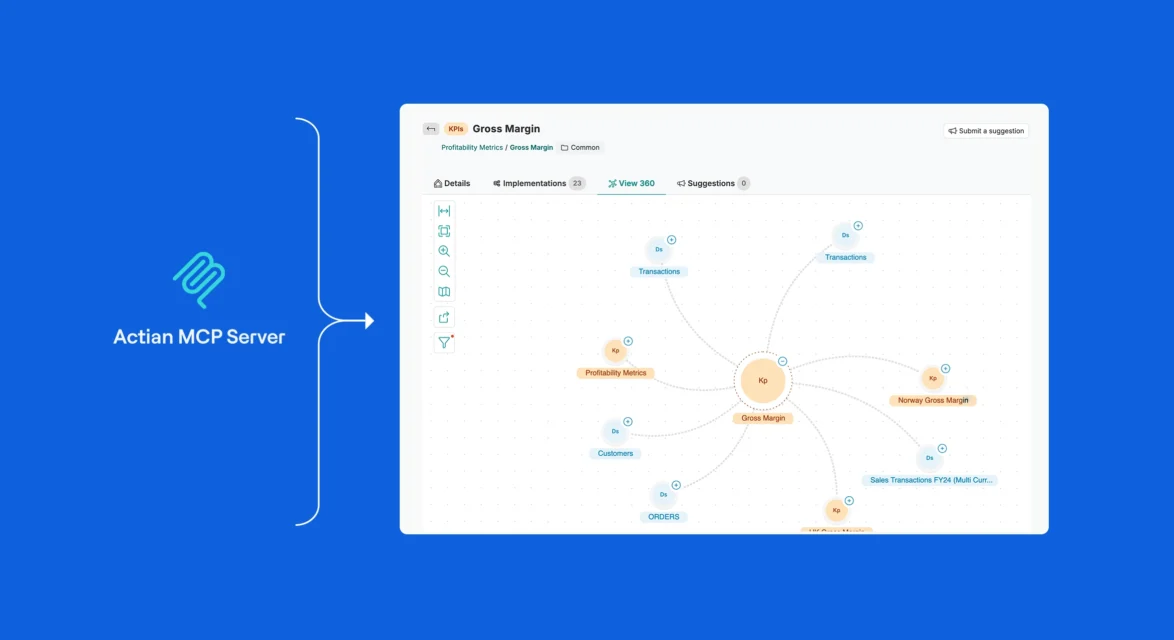
As a data analyst, how much of your day is spent actually analyzing data? And how much is spent toggling between tabs, trying to find the right dataset, or asking someone, “Hey, what does cust_ltv_rtn mean again?”
That frustrating cycle occurs because the tools your team depends on don’t communicate with each other. On the one hand, you have AI Assistants like Claude and ChatGPT, which are great for brainstorming and quick analysis. On the other hand, you have a static data catalog, which holds all the critical definitions and context for your data.
What if they could connect? This is now possible by combining two key technologies.
- First is a knowledge graph, which acts like a smart, interconnected map of your entire data landscape. Unlike traditional catalogs that rely on relational databases—forcing you to create complex joins just to see how data is connected—a knowledge graph stores the relationships as a core part of the data itself. This makes it incredibly fast and intuitive.
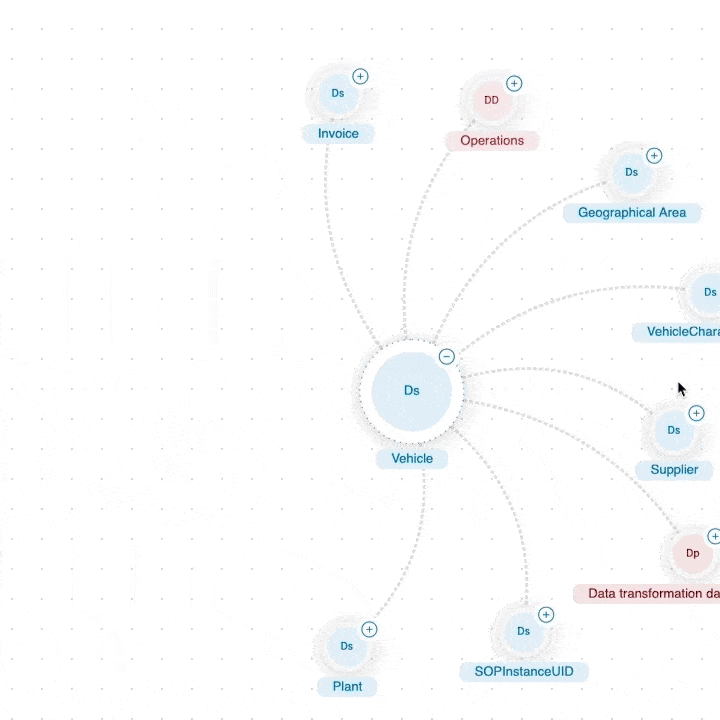
- The second is an MCP (Model Context Protocol) Server, which acts as a secure bridge between your AI assistant and your data catalog. It provides the AI with a specific set of tools, such as the ability to perform a semantic search on the business glossary or instantly map a dataset’s relationships, allowing users to pull critical context from the catalog directly into their conversational workflow.

Semantic search is a method that goes beyond simple keyword matching to interpret the intent and contextual meaning of a user’s query. By understanding the relationships between words and concepts, it provides more relevant and precise results that match what the user is truly seeking.
Here’s a quick demo to understand how a knowledge graph-powered platform enables AI assistants to produce reliable output:
By implementing them, you change your catalog from a passive library into an active, intelligent partner in your analysis. Here are five reasons why that approach makes traditional catalogs feel ancient:
1. It Transforms Your Catalog from a Passive Repository to an Active Intelligence Partner
Traditional data catalogs are fundamentally static. They are databases of metadata that you must proactively search. Actian Data Intelligence Platform, powered by its MCP Server and knowledge graph, activates your metadata, bringing it directly into the conversational tools where work happens.
When a user asks a question in their chat, the AI assistant uses the MCP Server’s tools to query the data catalog. Since the data catalog is built on the knowledge graph, it returns a faster, more intelligent answer than a traditional catalog could. This answer is delivered directly back into the user’s conversation.
Your catalog no longer merely serves as a record system; it now actively participates in analysis, becoming an essential part of your Agentic AI strategy by delivering the right information precisely when needed.
2. It Eliminates “Context-Switching” and Restores Team Momentum.
Productivity in data analysis is all about momentum. The context-switching between an AI conversation and the catalog interface is a momentum killer.
Imagine an ESG analyst building a regulatory report. Within their Claude conversation, they can now ask:
- “What is our organization’s definition of the KPI Lost Time Incident rate?”
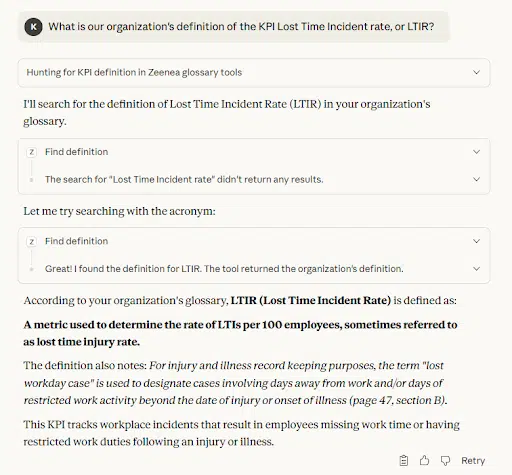
- Followed by, “Find datasets where I can track this KPI.”
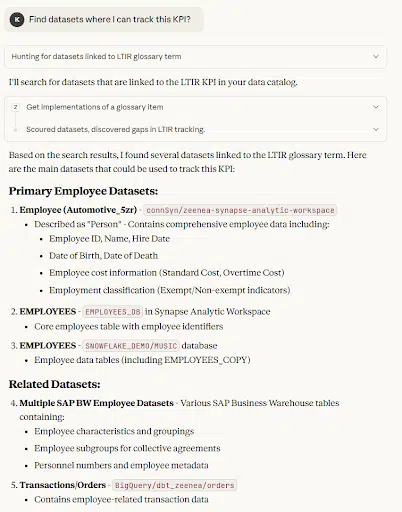
The MCP Server instantly fetches this information from the catalog and presents it in the chat. There are no new tabs, no lost trains of thought. By eliminating this friction, you dramatically accelerate the speed and quality of analysis, allowing your team to stay focused on generating insights rather than searching for definitions.
3. It Delivers True Semantic Understanding, Not Just Keyword Matching
Here’s where having a knowledge graph as your foundation really pays off. While other catalogs can perform basic keyword searches, the Actian MCP Server leverages the knowledge graph for true semantic search.
When a user searches for “revenue,” they don’t just get results for “revenue.” They get conceptually related terms like “income,” “sales,” “gross profit,” and “billing”—because the knowledge graph understands the meaning and relationship between these concepts, not just the words themselves. This ensures that users discover the full context of the business vocabulary, uncovering critical connections they might have otherwise missed.
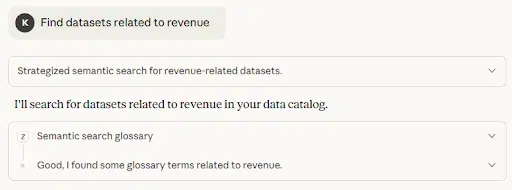

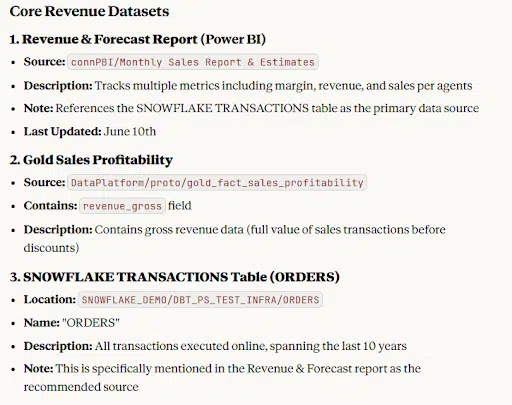
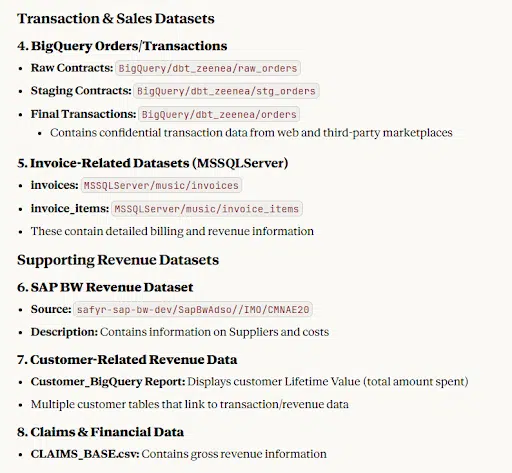
4. It Connects Complex Data Relationships Instantly
How is the customer table connected to orders, and transactions? Answering this question in a traditional catalog often requires clicking through multiple screens, understanding the data model, and writing SQL queries with complex joins.
The get-data-model tool within the Actian MCP Server makes this effortless. By querying the knowledge graph’s understanding of relational dependencies, a user can instantly see the data relationships. This capability is crucial for everything from building accurate analytics models in healthcare to understanding complex customer behavior in e-commerce.

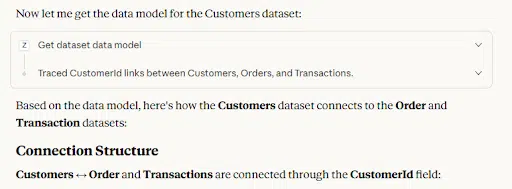
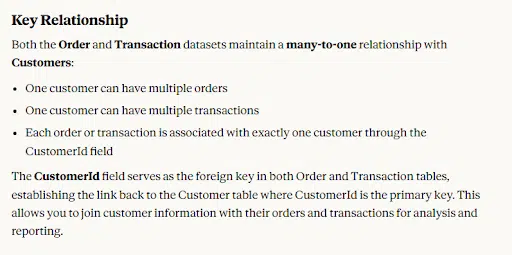
5. It Builds the Governed Foundation for a Scalable Agentic AI Strategy
Many organizations are still in the early stages of adopting AI assistants. This is the perfect time to implement this technology. By doing so, you build the foundation for a scalable and, most importantly, governed data for an Agentic AI strategy.
You ensure that as your teams increasingly rely on AI, they do so with a direct line to trusted, well-understood data from day one. It maximizes the ROI of both your data catalog and AI platform investments by creating a powerful feedback loop: the AI drives usage of the catalog, and the catalog provides the trusted, contextual fuel for the AI. This positions your organization to lead, safely and effectively, in the new age of AI-driven enterprise intelligence.
Good Quality Data Still Matters
With any AI-powered platform, the quality of the output depends on the quality of the input. The Actian MCP Server[link to the Actian MCP Server capability page] can only surface the associated context, business definitions, and technical details that are present in your data catalog.
This integration quickly identifies the most valuable and frequently accessed parts of your data ecosystem, providing a clear, demand-driven business case for prioritizing your curation efforts where they will have the most impact.
A data catalog is no longer just a passive repository of information. It must serve as an active, intelligent, and conversational core of your data strategy. Traditional catalogs treat metadata as static, passive documentation, failing to provide the dynamic context, lineage, and trust that autonomous AI agents need to make reliable decisions. This necessitates a shift to data intelligence, where metadata becomes an active, operational fabric that continuously enriches data with crucial context about its quality, usage, and business meaning.
Ready to activate your data and eliminate the context-switching for good?
Subscribe to the Actian Blog
Subscribe to Actian’s blog to get data insights delivered right to you.
- Stay in the know – Get the latest in data analytics pushed directly to your inbox.
- Never miss a post – You’ll receive automatic email updates to let you know when new posts are live.
- It’s all up to you – Change your delivery preferences to suit your needs.
Subscribe
(i.e. sales@..., support@...)




